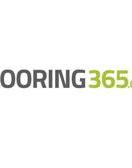A floating floor is a method of installing a wooden floor that doesn’t involve glueing or nailing the boards to the subfloor. You might come across laminate flooring referred to as ‘floating floors’ because it’s intended to almost always be installed via floating, but this installation can be used on a wide variety of floors, including real wood flooring.
Read more to discover what a floating floor is and how to use this method of installation.
Skip to Section:
Floating Floors Explained | Advantages | How to Install | FAQs
Floating Floors Explained
A floating floor doesn’t refer to the type of floor that you buy, but is instead a method of installation that can be used on a wide variety of flooring including engineered wood flooring (our most popular variety of floor) and laminate.
There are two main ways that you can install wood flooring: fixing it to the subfloor, using nails, screws or glue, or floating.
Each method of installation has its own advantages according to your requirements -- and floating floors are quickly becoming the most popular way to install a solid wood or engineered wood floor.
A Floating Floor
Unlike a fixed floor, a floating floor is not attached to the underlay or subfloor. The boards are joined together, according to your prefered method, to ensure the floor is stable and durable, but the floor ‘floats’ above the underlay. It can be used on a variety of different boards including click lock and tongue and groove.
You might also hear a floating floor referred to as a ‘loose lay’ or ‘loose laid’ floor as the boards are loose and not fixed into a set position.
Advantages of a Floating Floor
When choosing whether to opt for a fixed floor installation or a floating floor, you should consider the different advantages and disadvantages of each.
A floating floor is:
-
- Easy to DIY. Installing a wood floor can be a daunting DIY task if it involves glue and nails, but a floating floor makes it easy for you to install the floor yourself.
-
- Cheaper. If you don’t need to pay someone to install the floor, it’s often a cheaper method of installation as you reduce the paid labor needed.
-
- Easier to change: If you like changing the look of your space relatively often, a floating floor is easier to remove and replace in the future as it’s not fixed to the subfloor.
-
- Fast to install. The period between buying your new floor and having it in place can be frustrating; you want to be able to enjoy it immediately! A floating floor is faster to install than a fixed floor, meaning you can get it fitted in no time.
Disadvantages of a Floating Floor
While there are a lot of advantages to a floating floor, there are some disadvantages too which might lead you to choose a fixed floor installation.
-
- Reduced durability. A floating floor can lead to reduced durability, meaning the floor is worn out slightly faster than it otherwise might. This is because the normal expansion and contraction of the floor is limited by the method of installation.
-
- Cannot be used for solid wood. While engineered wood flooring, a fantastic choice of real wood floor, can be installed using the floating floor method, solid wood flooring needs to be fixed to the subfloor.
It’s worth noting that, just like fixed floors, a floating floor can be re-sanded and refinished -- if it’s made from engineered wood material.
How to Install a Floating Floor
Floating floor installation is the easiest method of fitting your new floor.
1. Prepare the subfloor.
Prepare the subfloor using underlay or even a wood subfloor material. This helps protect your new floor from damp and adds important insulation. Also ensure that the subfloor is relatively level and fill any dips that could compromise the structure of your final floor and sand down any bumps.
2. Start on the Furthest Side
Start of the side furthest from the door and ensure you have fitted a spacer. This means that as the floor shrinks and expands, it has the space to move. Lay the first board with the groove side (if using tongue and groove) against the wall.
As you work through the room, ensure that your fixing the boards together well as this helps to prevent the floor from shifting.
Ensure that each row staggers the joints on the wood, like a brick wall. This helps give the floor additional stability.
3. Remove the spacers
When you’ve finished placing the floor, ensure you remove the spacers and install shoe molding to cover the space at the edge.
Floating Floor FAQs
Still have questions about what a floating floor is or how it work? Perhaps these will help. If not, we’d love for you to get in touch with our flooring experts. You can ring, use our live chat feature, or pop into our showroom if you’re in Yorkshire.
Can any type of hardwood flooring be floated?
No, only engineered wood flooring can be floated over an underlay. Engineered wood flooring is more stable than solid wood so can withstand the added pressure of floating. Solid wood, on the other hand, doesn’t have the structural strength for a floating installation.
Does a floating floor move?
No, a floating floor stays stable and unmoving. This is due to a number of reasons including:
-
- Joinery: the boards of the floor are snapped or glued together which help to prevent them moving.
-
- Friction: friction occurs between the floorboards and the underlay, as well as between the boards themselves. This helps to prevent movement.
-
- Weight: The weight of the floor also helps to keep it in place.
What is a Floating Floor?
If you have any further questions about floating floors, please get in touch with our experts at Flooring 365.

